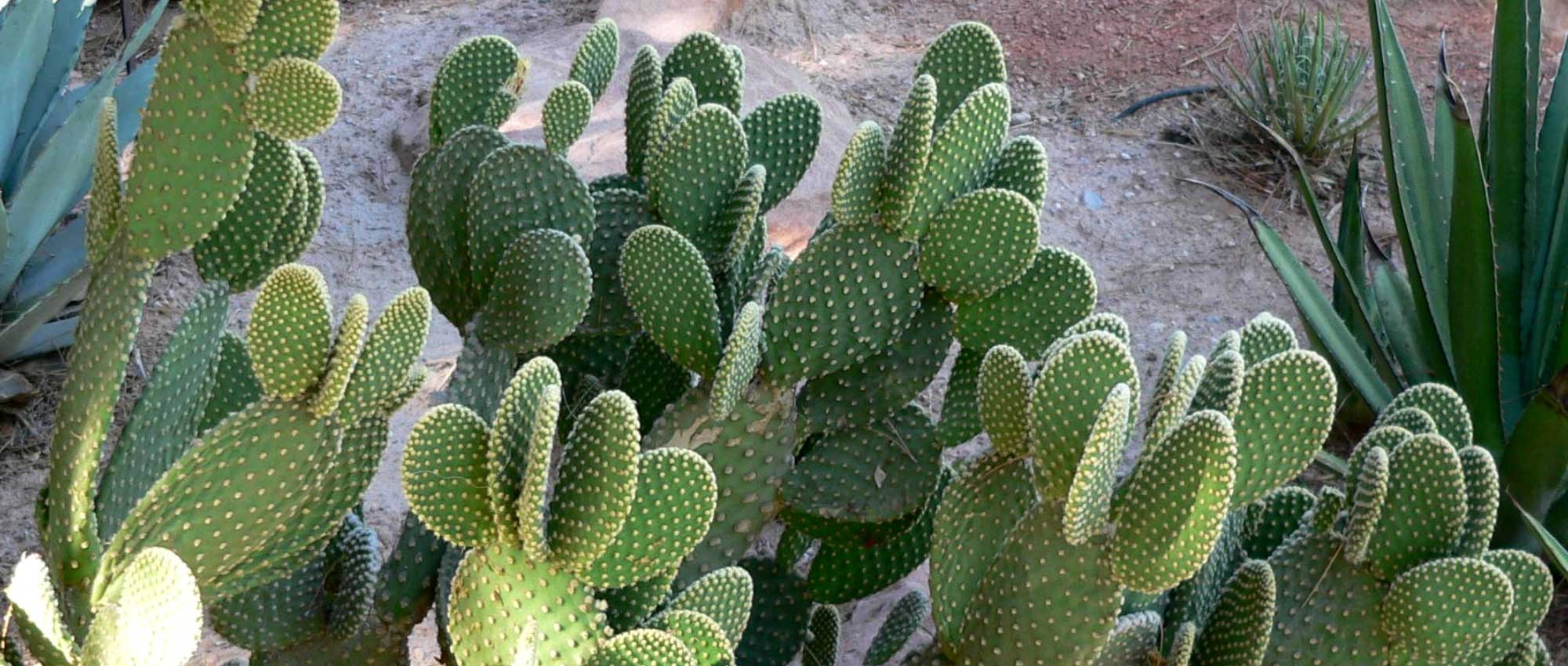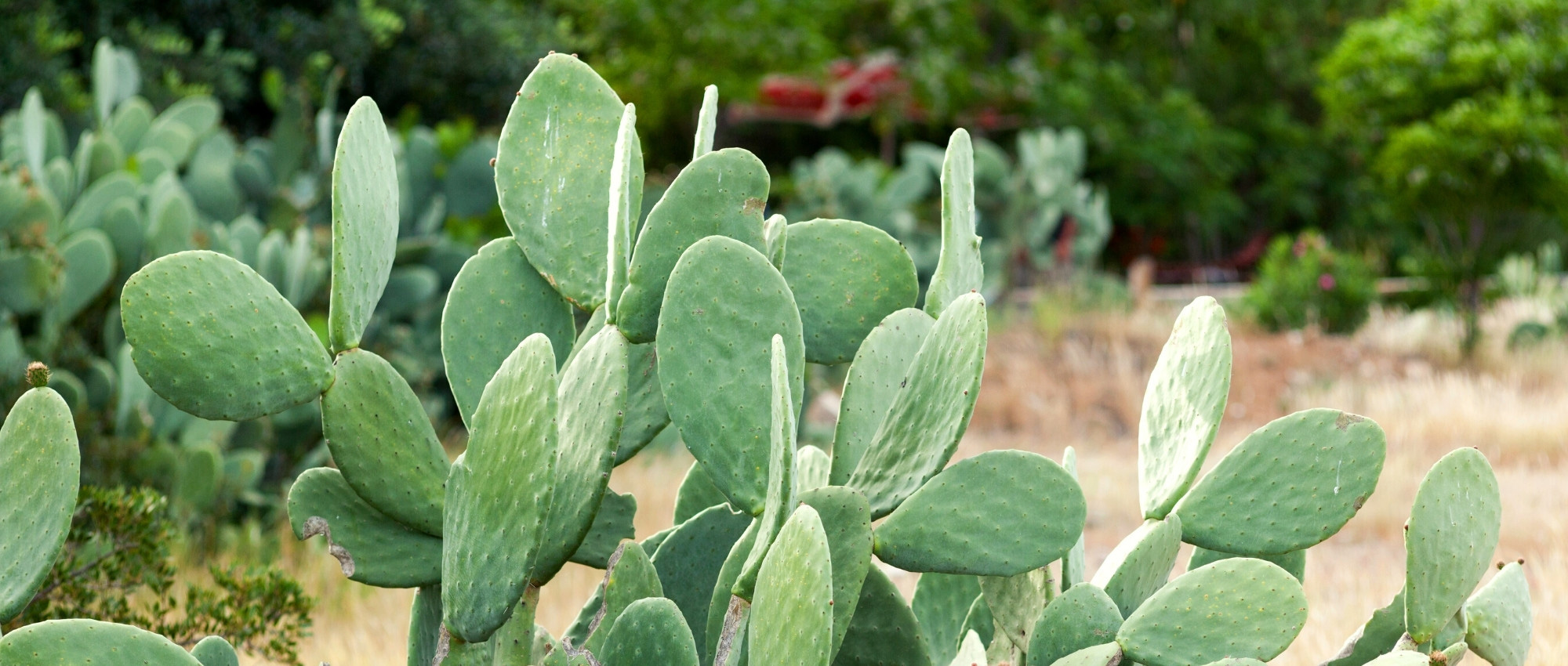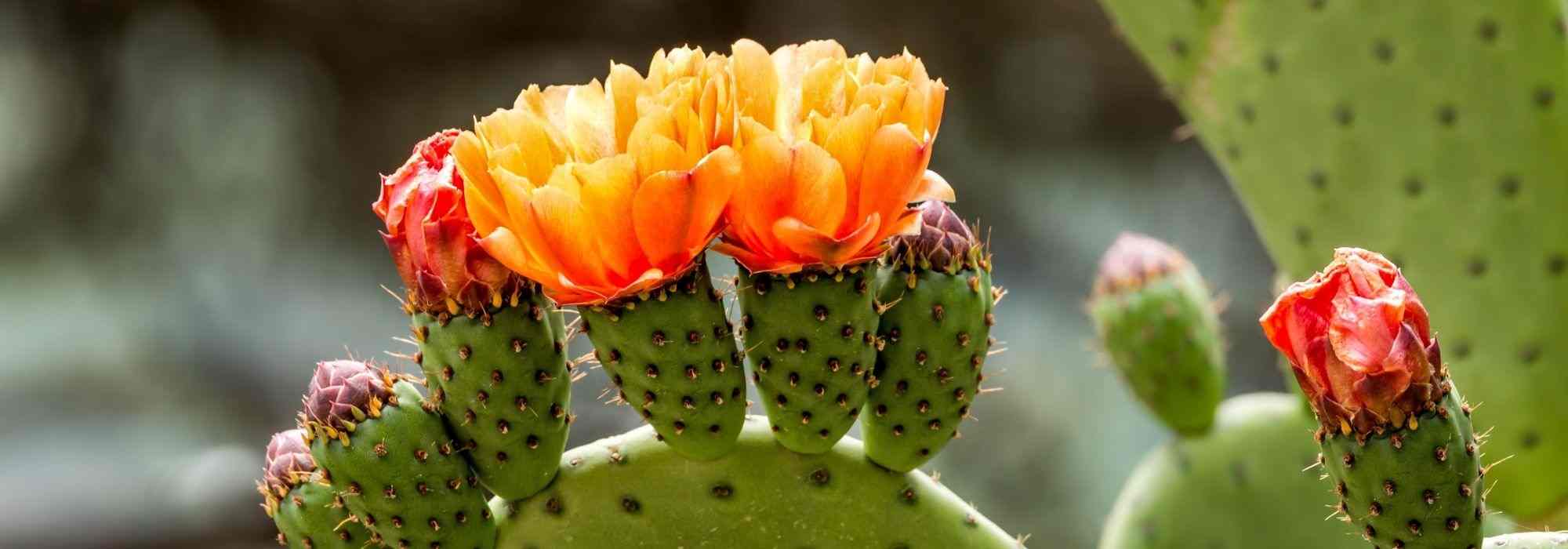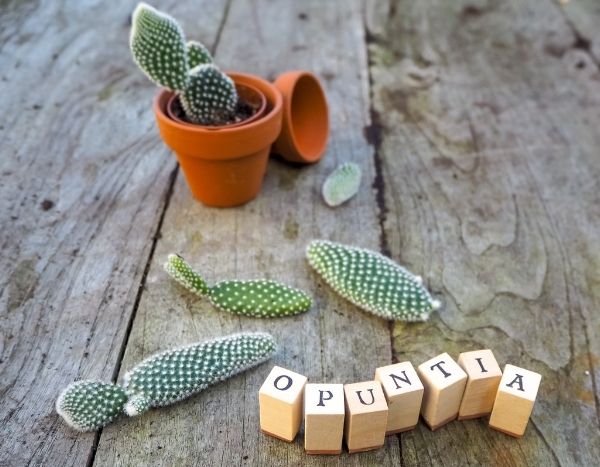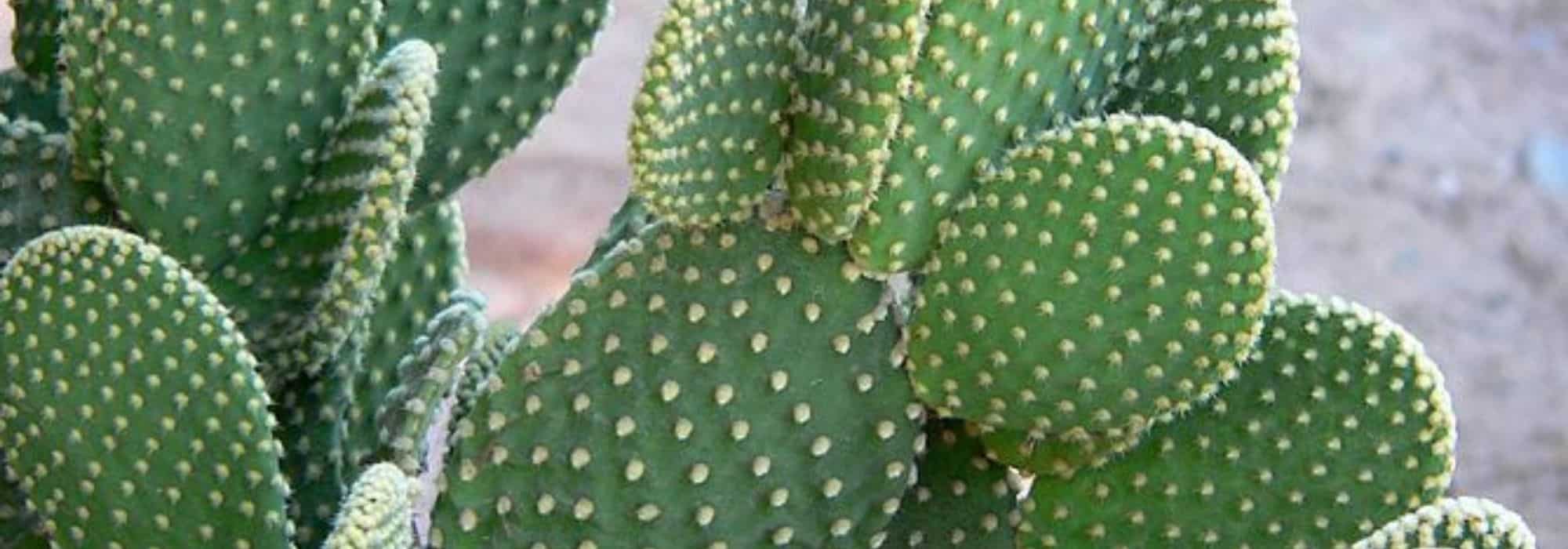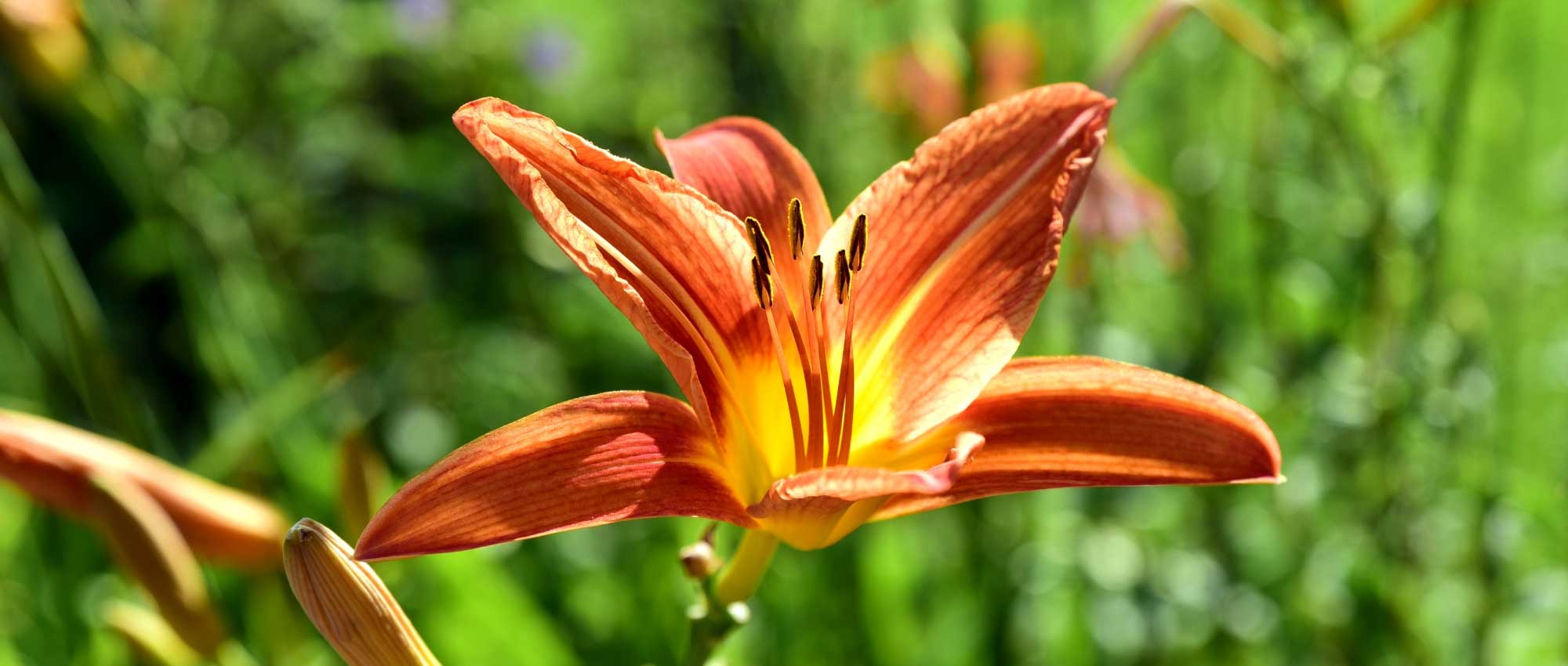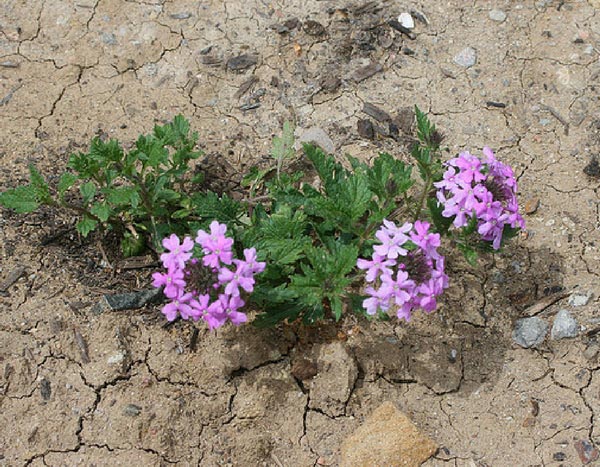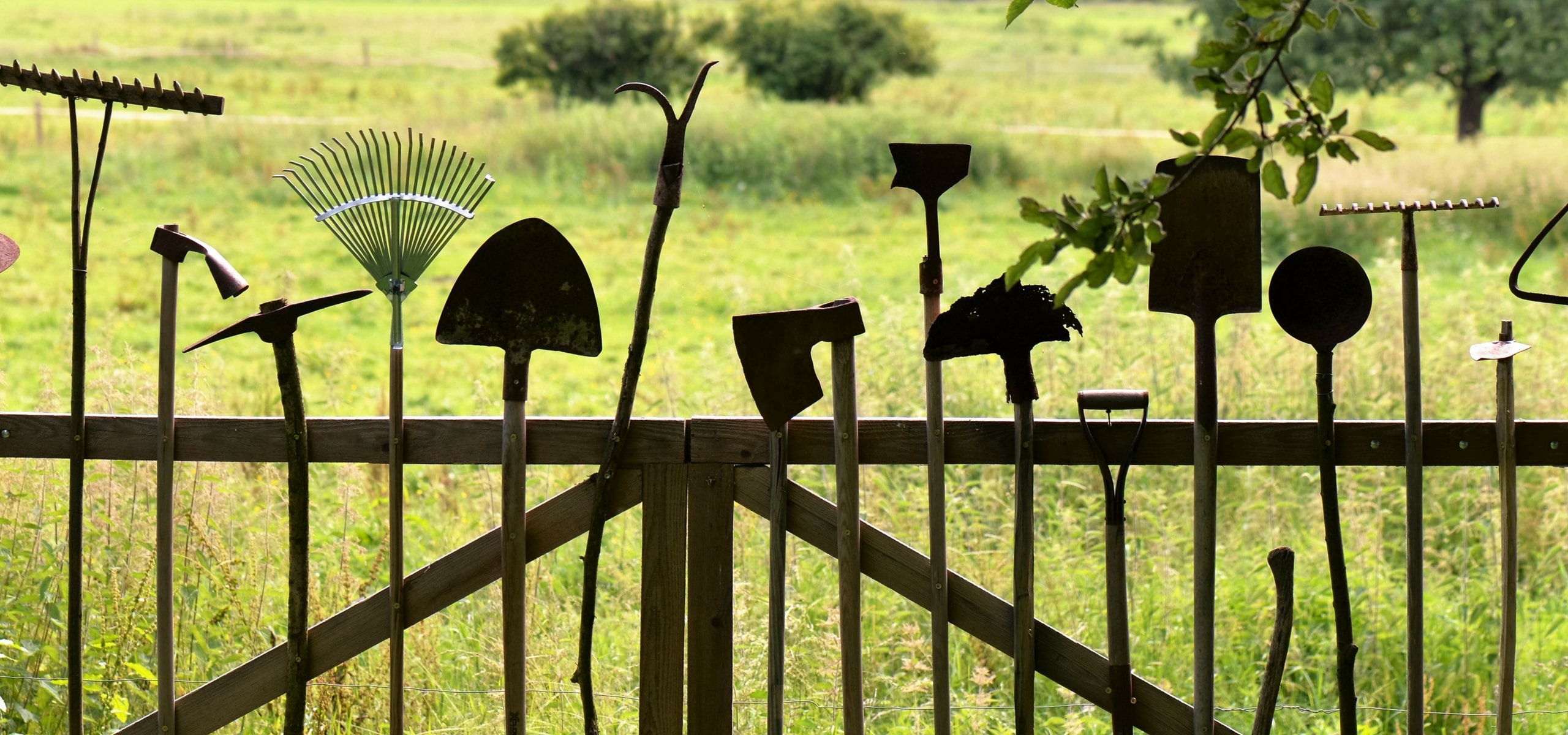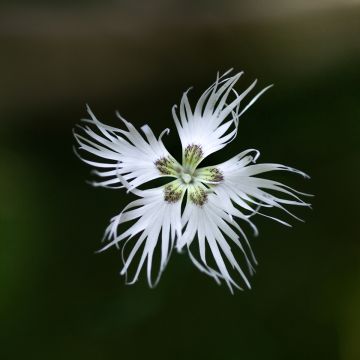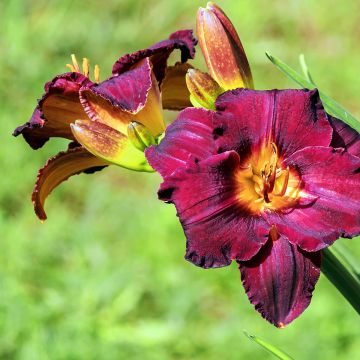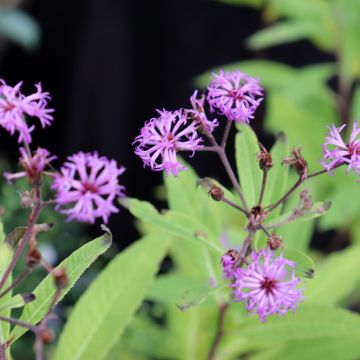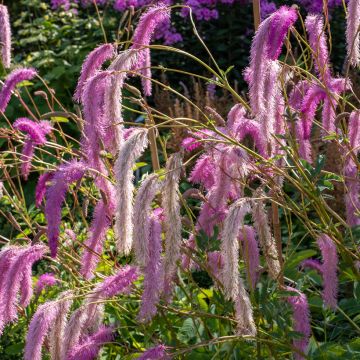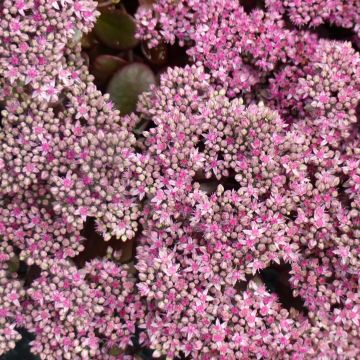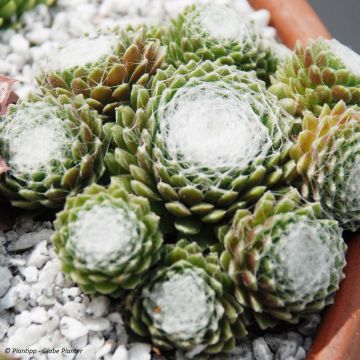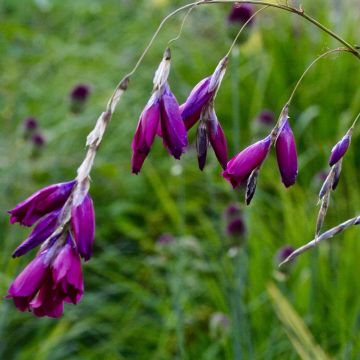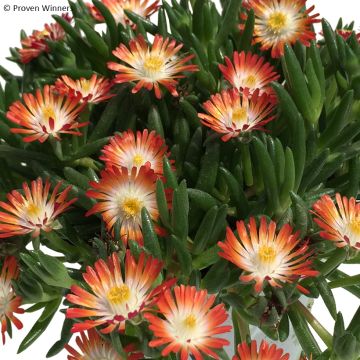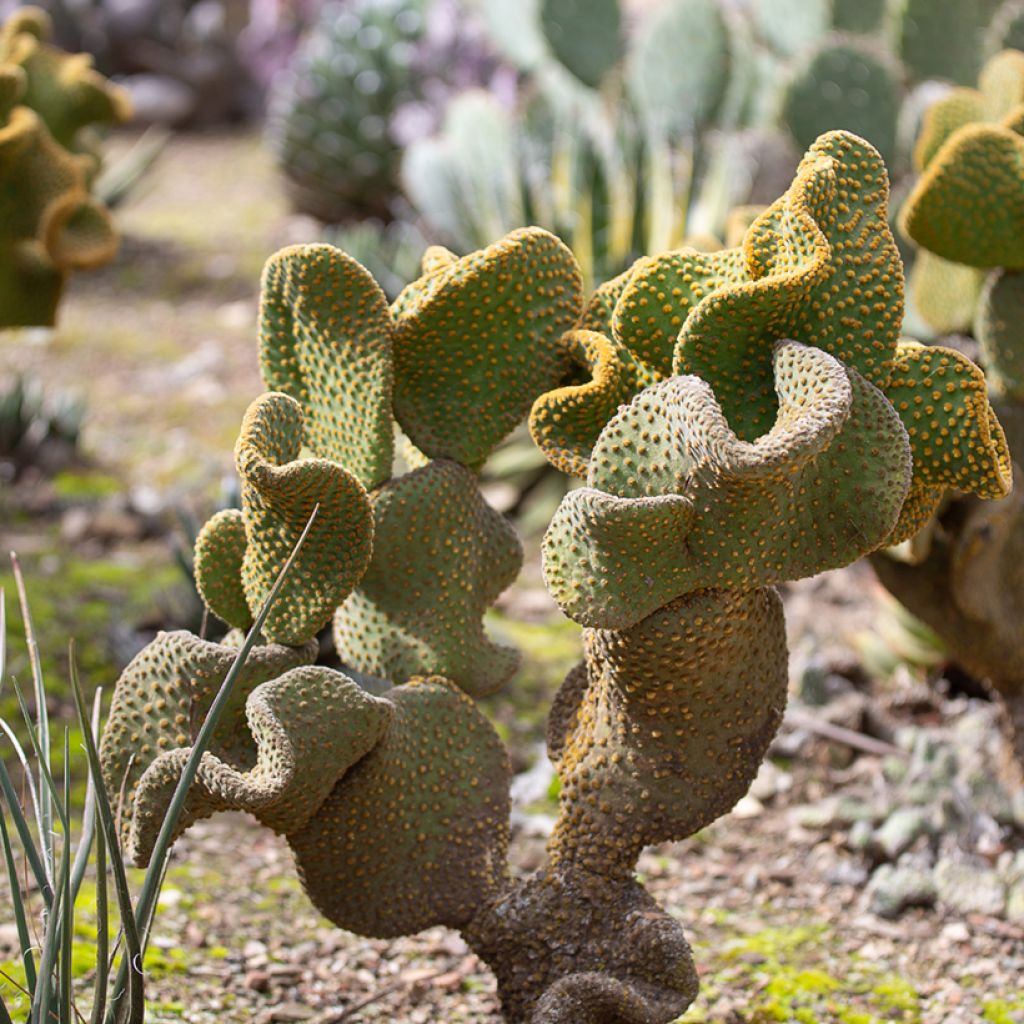

Opuntia microdasys Undulata - Prickly pear cactus
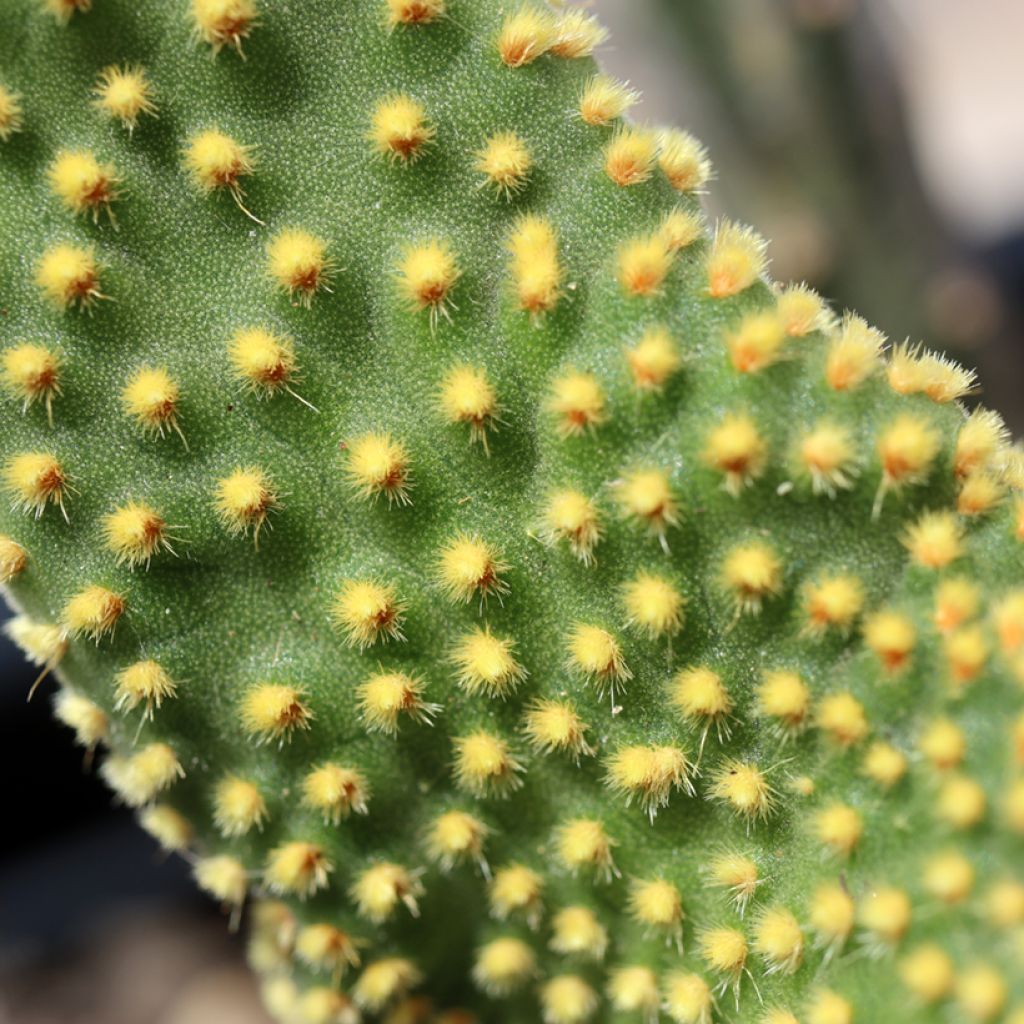

Opuntia microdasys Undulata - Prickly pear cactus
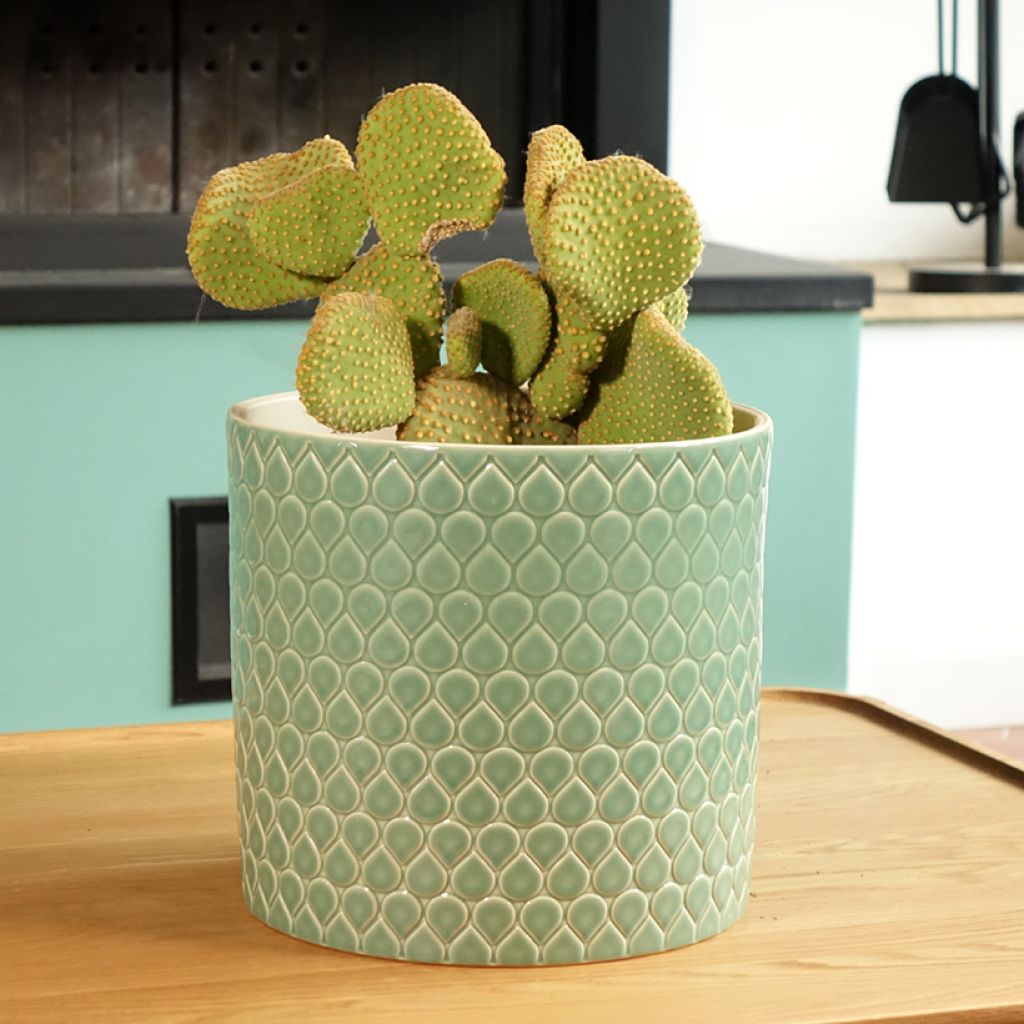

Opuntia microdasys Undulata - Prickly pear cactus
Opuntia microdasys Undulata - Prickly pear cactus
Opuntia microdasys var. pallida Undulata
Bunny ears cactus
Special offer!
Receive a €20 voucher for any order over €90 (excluding delivery costs, credit notes, and plastic-free options)!
1- Add your favorite plants to your cart.
2- Once you have reached €90, confirm your order (you can even choose the delivery date!).
3- As soon as your order is shipped, you will receive an email containing your voucher code, valid for 3 months (90 days).
Your voucher is unique and can only be used once, for any order with a minimum value of €20, excluding delivery costs.
Can be combined with other current offers, non-divisible and non-refundable.
Home or relay delivery (depending on size and destination)
Schedule delivery date,
and select date in basket
This plant carries a 12 months recovery warranty
More information
We guarantee the quality of our plants for a full growing cycle, and will replace at our expense any plant that fails to recover under normal climatic and planting conditions.
Would this plant suit my garden?
Set up your Plantfit profile →
Description
Opuntia microdasys 'Undulata' is a particularly decorative and original variety of the bunny ears cactus. This striking cactus surprises with its wavy "prickly pear" segments, reminiscent of coral reefs. Compact, unusual, and easy to grow in pots, it makes an excellent choice for cactus collectors. Indoors, it will require plenty of sunlight. A stay outdoors from spring to late summer will greatly benefit it.
Opuntia microdasys var. pallida 'Undulata' belongs to the Cactaceae family. The original species comes from the semi-desert regions of Mexico. Its scientific name, Opuntia microdasys, derives from the Greek "mikros" (small) and "dasys" (pilous), referring to the glochidia covering its segments. The pallida undulata variety is a horticultural selection not found in the wild. This mutation of 'pallida' is recognisable by its compact habit and irregularly waved cladodes. This contorted cactus forms a low, dense bush reaching 40 to 60 cm in height at maturity, with a spread of up to 60 cm when planted in the ground. In pots, it remains more compact. Its habit is spreading, forming a dense clump without a distinct central trunk. The segments branch from the base, creating a dense, spreading structure. In late spring, the plant produces a generation of deformed, wavy cladodes, which accumulate over time. This variety is described as cristate (or fasciated), as each new prickly pear grows in ridges. Its segments (cladodes) display a light yellow-green to medium green hue and are covered in small tufts of bright yellow to tawny glochidia, measuring 2 to 3 mm. These highly decorative glochidia are very fine and cling to the skin at the slightest touch. Flowering is very rarely observed in cultivation for this peculiar variety.
Opuntia microdasys Undulata is an excellent houseplant and an original gift idea. It will make a striking statement in a very bright interior or conservatory. It blends well with collections of cacti and succulents. You can pair it with Astrophytum myriostigma, a thornless, architectural cactus, Gasteria liliputana, a compact succulent with thick leaves, Rebutia heliosa, a small globular cactus offering beautiful spring flowering, and Echinopsis subdenudata, a globular cactus producing large nocturnal white flowers.
Opuntia microdasys Undulata - Prickly pear cactus in pictures


Flowering
Foliage
Plant habit
Botanical data
Opuntia
microdasys var. pallida
Undulata
Cactaceae
Bunny ears cactus
Opuntia microdasys Pallida Undulata
Cultivar or hybrid
Planting and care
To cultivate Opuntia microdasys undulata, choose a location in full sun, essential for its growth and flowering. This is a very tender variety, better suited to pot cultivation than in open ground.
In pots, use a wide and shallow container and fill it with a light, well-draining substrate, such as a mix of cactus compost and coarse sand. Place your pot near a sunny window. Water moderately from mid-March to mid-October, about once a week, allowing the substrate to dry out between waterings. In winter, reduce watering to once every three weeks to avoid excess moisture. Move your pot outside into the sun as soon as the frost has passed, and bring it back indoors at the first sign of cold weather.
In open ground, ensure the soil is well-drained, ideally sandy or stony, to prevent waterlogging. Plant it in a spot sheltered from cold winds, in regions where winter temperatures drop below -2°C, the frost tolerance threshold for this variety. A gravel mulch can help protect the roots from cold and retain soil warmth. Avoid excess moisture, especially in winter, as it can cause root rot. It has no known pests in our latitudes, apart from scale insects (mainly indoors).
Propagation: by prickly pear cutting, easy: remove a segment at a joint, place it on a cactus soil substrate for a few days until a callus forms. Then insert the base of the cutting slightly deeper into the soil and water regularly. The plant will not flower or fruit until it is at least 3 years old.
Handle this cactus with thick gloves and remove them carefully, as the glochidium sticks to all fabrics and penetrates the skin!
Planting period
Intended location
Care
Planting & care advice
This item has not been reviewed yet - be the first to leave a review about it.
Similar products
Haven't found what you were looking for?
Hardiness is the lowest winter temperature a plant can endure without suffering serious damage or even dying. However, hardiness is affected by location (a sheltered area, such as a patio), protection (winter cover) and soil type (hardiness is improved by well-drained soil).

Photo Sharing Terms & Conditions
In order to encourage gardeners to interact and share their experiences, Promesse de fleurs offers various media enabling content to be uploaded onto its Site - in particular via the ‘Photo sharing’ module.
The User agrees to refrain from:
- Posting any content that is illegal, prejudicial, insulting, racist, inciteful to hatred, revisionist, contrary to public decency, that infringes on privacy or on the privacy rights of third parties, in particular the publicity rights of persons and goods, intellectual property rights, or the right to privacy.
- Submitting content on behalf of a third party;
- Impersonate the identity of a third party and/or publish any personal information about a third party;
In general, the User undertakes to refrain from any unethical behaviour.
All Content (in particular text, comments, files, images, photos, videos, creative works, etc.), which may be subject to property or intellectual property rights, image or other private rights, shall remain the property of the User, subject to the limited rights granted by the terms of the licence granted by Promesse de fleurs as stated below. Users are at liberty to publish or not to publish such Content on the Site, notably via the ‘Photo Sharing’ facility, and accept that this Content shall be made public and freely accessible, notably on the Internet.
Users further acknowledge, undertake to have ,and guarantee that they hold all necessary rights and permissions to publish such material on the Site, in particular with regard to the legislation in force pertaining to any privacy, property, intellectual property, image, or contractual rights, or rights of any other nature. By publishing such Content on the Site, Users acknowledge accepting full liability as publishers of the Content within the meaning of the law, and grant Promesse de fleurs, free of charge, an inclusive, worldwide licence for the said Content for the entire duration of its publication, including all reproduction, representation, up/downloading, displaying, performing, transmission, and storage rights.
Users also grant permission for their name to be linked to the Content and accept that this link may not always be made available.
By engaging in posting material, Users consent to their Content becoming automatically accessible on the Internet, in particular on other sites and/or blogs and/or web pages of the Promesse de fleurs site, including in particular social pages and the Promesse de fleurs catalogue.
Users may secure the removal of entrusted content free of charge by issuing a simple request via our contact form.
The flowering period indicated on our website applies to countries and regions located in USDA zone 8 (France, the United Kingdom, Ireland, the Netherlands, etc.)
It will vary according to where you live:
- In zones 9 to 10 (Italy, Spain, Greece, etc.), flowering will occur about 2 to 4 weeks earlier.
- In zones 6 to 7 (Germany, Poland, Slovenia, and lower mountainous regions), flowering will be delayed by 2 to 3 weeks.
- In zone 5 (Central Europe, Scandinavia), blooming will be delayed by 3 to 5 weeks.
In temperate climates, pruning of spring-flowering shrubs (forsythia, spireas, etc.) should be done just after flowering.
Pruning of summer-flowering shrubs (Indian Lilac, Perovskia, etc.) can be done in winter or spring.
In cold regions as well as with frost-sensitive plants, avoid pruning too early when severe frosts may still occur.
The planting period indicated on our website applies to countries and regions located in USDA zone 8 (France, United Kingdom, Ireland, Netherlands).
It will vary according to where you live:
- In Mediterranean zones (Marseille, Madrid, Milan, etc.), autumn and winter are the best planting periods.
- In continental zones (Strasbourg, Munich, Vienna, etc.), delay planting by 2 to 3 weeks in spring and bring it forward by 2 to 4 weeks in autumn.
- In mountainous regions (the Alps, Pyrenees, Carpathians, etc.), it is best to plant in late spring (May-June) or late summer (August-September).
The harvesting period indicated on our website applies to countries and regions in USDA zone 8 (France, England, Ireland, the Netherlands).
In colder areas (Scandinavia, Poland, Austria...) fruit and vegetable harvests are likely to be delayed by 3-4 weeks.
In warmer areas (Italy, Spain, Greece, etc.), harvesting will probably take place earlier, depending on weather conditions.
The sowing periods indicated on our website apply to countries and regions within USDA Zone 8 (France, UK, Ireland, Netherlands).
In colder areas (Scandinavia, Poland, Austria...), delay any outdoor sowing by 3-4 weeks, or sow under glass.
In warmer climes (Italy, Spain, Greece, etc.), bring outdoor sowing forward by a few weeks.






























